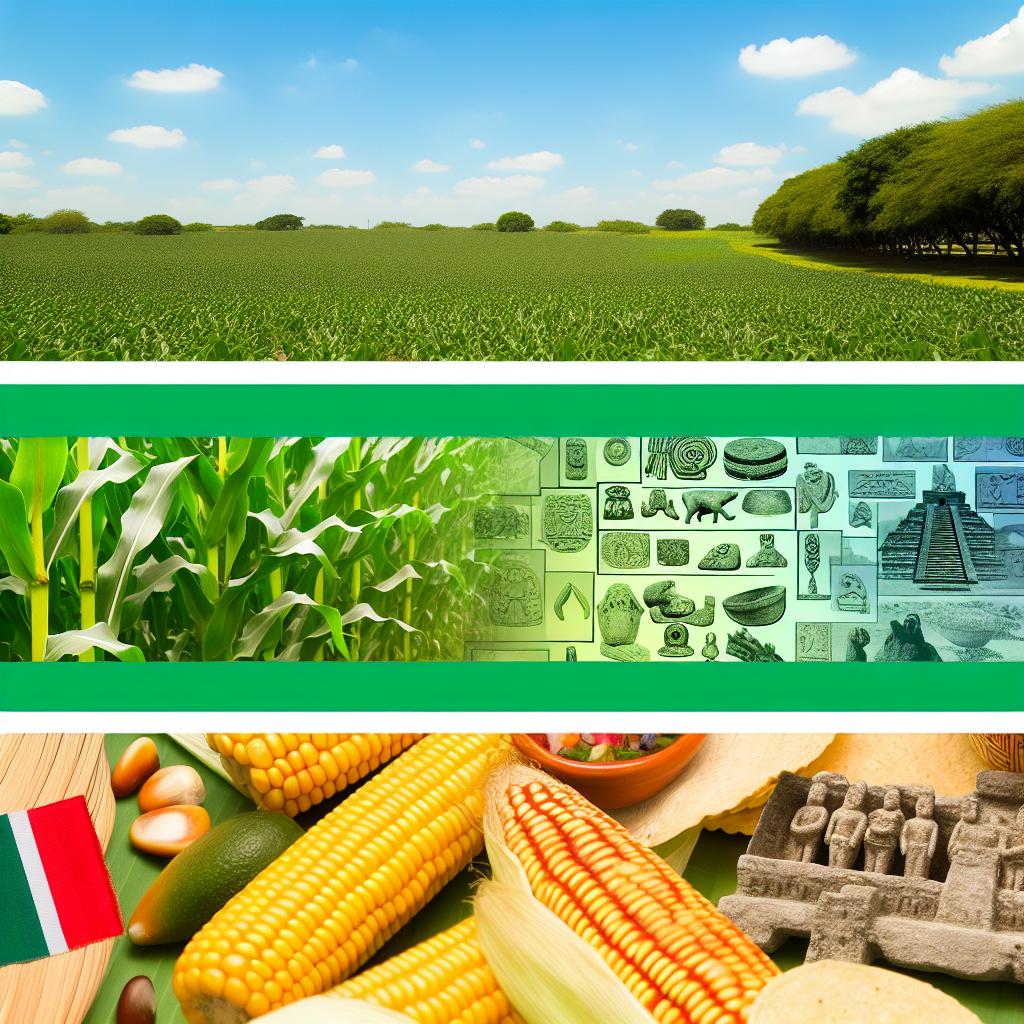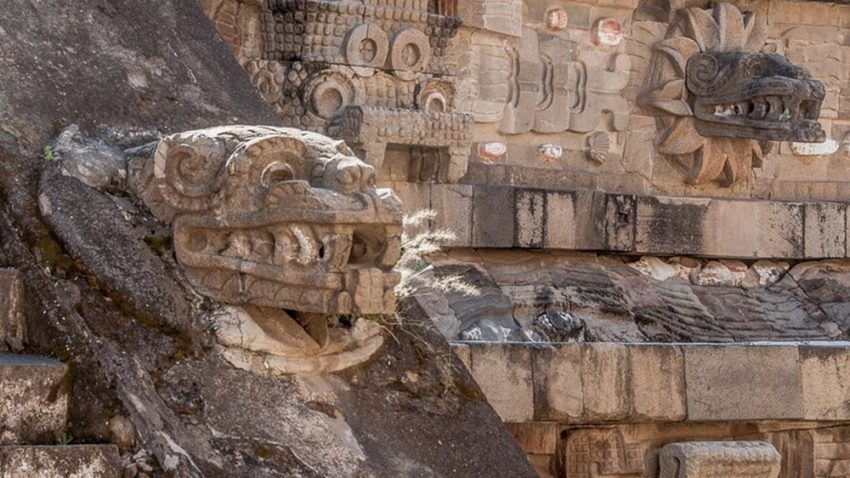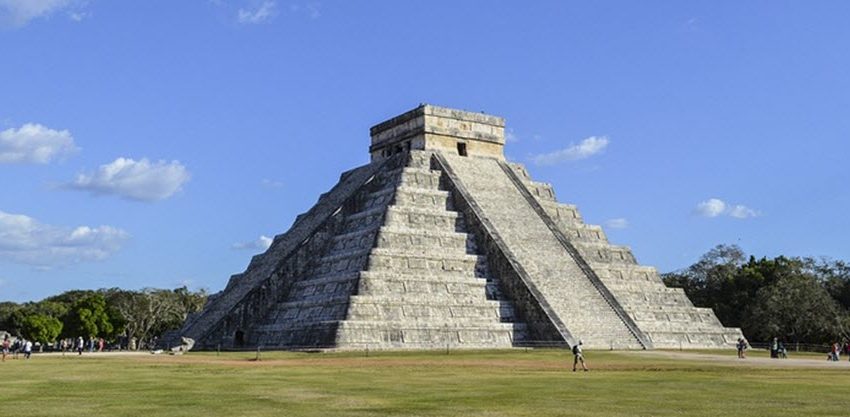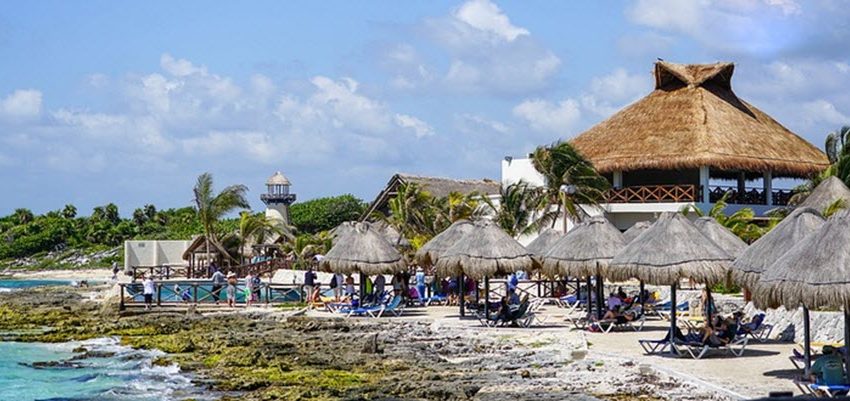The Historical Significance of Maize in Mexico
Maize, known as corn in much of the English-speaking world, is deeply woven into the fabric of Mexican culture and history. It is a staple crop that has been cultivated in the region for thousands of years, playing a crucial role in the development of ancient civilizations such as the Aztecs and the Maya. The significance of maize extends beyond its nutritional value, serving as a central element in social, economic, and religious contexts.
Origins and Domestication
The domestication of maize began around 9,000 years ago in the Balsas River Valley in what is now modern-day Mexico. This process transformed a wild grass called teosinte into the maize we are familiar with today. The innovation and agricultural knowledge of these early Mesoamerican communities established the foundation for a vital food source that would support civilizations for millennia.
Maize’s journey from teosinte to a staple crop wasn’t merely about genetic changes. It was a transformation marked by careful selection and harvesting practices. Early agriculturalists observed the characteristics of teosinte plants which thrived under specific conditions and possessed favorable traits. By methodically selecting seeds from the best-performing plants, they encouraged the evolution of maize, enhancing its yield, resilience, and nutritional content.
The domestication process also involved acclimatizing maize to various environments across the Americas. As communities migrated, they brought maize with them, adapting it to diverse climates and landscapes. This adaptability made maize viable in geographically distinct regions, from highland plateaus to coastal plains, broadening its range and usability.
Culinary Uses and Traditions
Maize is a cornerstone of Mexican cuisine, utilized in a variety of traditional dishes. Tortillas, tamales, and atole are just a few examples of iconic foods that rely heavily on maize. The culinary techniques associated with these dishes, such as nixtamalization—a process that involves soaking maize in an alkaline solution to improve its nutritional profile—are traditional practices that have been passed down through generations.
These traditional dishes not only satisfy hunger but also form the core of social gatherings. Various ceremonies and festivals feature maize-based foods prominently, underscoring the community’s connection to their heritage. Meals centering on maize offer a shared experience, fostering unity and cultural continuity among communities.
The process of nixtamalization is particularly noteworthy. By soaking and cooking maize in an alkaline solution, the nutritional benefits of the grain are enhanced, increasing calcium content and making nutrients like niacin more bioavailable. This process, discovered by ancient Mesoamericans, reveals their sophisticated understanding of food science long before it was formally studied.
Economic Impact
Economically, maize remains a significant agricultural product in Mexico. It provides livelihoods for millions of farmers across the country, forming the backbone of rural economies. The crop’s importance is also reflected in Mexico’s trade practices and agricultural policies, highlighting the need for sustainable and equitable maize production.
Maize cultivation supports a vast network of regional markets, influencing trade dynamics within the country. The infrastructure supporting maize production, including transportation, storage, and marketing systems, plays a key role in the agricultural economy. This interconnectedness also creates ripple effects in related industries, from farm equipment manufacturing to food processing.
The Mexican government has long recognized the importance of maize and has implemented various policies aimed at protecting and promoting its production. These include subsidies, research programs to enhance crop yield and resistance, and initiatives to ensure fair pricing for farmers.
As global markets continue to expand, Mexico’s position as a major maize producer underscores its role in international trade. The agricultural policies surrounding maize not only aim to maintain domestic supply but also address export demands, making maize a key player in global food security strategies.
Religious and Cultural Aspects
In addition to its dietary and economic contributions, maize holds a special place in the spiritual and cultural life of Mexico. It is considered a sacred plant, with numerous myths and legends in Mesoamerican belief systems attributing creation and sustenance to this crop. Festivals and rituals celebrating maize, such as the Tlacaxipehualiztli or the Day of the Seed, emphasize its revered status in communal and religious life.
Many indigenous communities believe in the divine origin of maize, often featuring it prominently in their cosmogony. Stories of maize gods and ceremonies honoring these deities reflect the profound respect and reverence held by people towards maize.
These traditions illuminate the symbolic role of maize as a life-sustaining gift from the gods, placing it at the heart of cultural identity. This spiritual connection is evident in art, literature, and oral traditions passed through generations, maintaining the narrative of maize as a crucial aspect of life.
Challenges and Modern Perspectives
Today, Mexican farmers face challenges such as climate change, market fluctuations, and competition with genetically modified varieties. Efforts to preserve native maize strains and traditional farming techniques are essential for safeguarding biodiversity and cultural heritage. Organizations and initiatives aimed at conservation and education are working to support these goals. For more information on these efforts, many agricultural and environmental NGOs provide valuable resources online.
Climate change, with its unpredictable weather patterns and water scarcity, has posed significant risks to maize cultivation. Adaptation strategies, such as developing drought-resistant strains and implementing water-saving irrigation techniques, are crucial for sustaining production levels.
The rise of genetically modified (GM) maize strains also presents challenges for traditional farming practices. While GM crops offer increased yields and pest resistance, there is concern over their impact on local biodiversity and the potential erosion of indigenous maize varieties. These factors underscore the importance of preserving traditional strains, which hold irreplaceable genetic diversity and are integral to cultural heritage.
Efforts to address these challenges involve a combination of modernization and conservation. Initiatives aimed at educating farmers about sustainable practices, as well as promoting the importance of biodiversity, are essential in balancing progress with preservation.
A Living Legacy
Maize is more than just a crop in Mexico; it is a symbol of identity, resilience, and continuity. Understanding its role in Mexican culture offers insights into a shared human history and an appreciation for the complex relationship between communities and their environment. Maize’s legacy endures, reflecting the ingenuity and spirit of a people bound by over millennia of expertise and tradition.
This legacy is evident in how maize is interwoven into the daily lives and practices of Mexican people. From the way it’s cultivated, prepared, and consumed, to its prominence in cultural ceremonies and rituals, maize continues to be a significant thread in the tapestry of life in Mexico. Each kernel serves as a testament to the enduring connection between people and the land, echoing the past while simultaneously nourishing future generations.
This understanding fosters an appreciation for maize’s dual role as both a vital food source and a cultural beacon. It symbolizes sustenance, survival, and identity, reinforcing the narrative of a legacy that transcends mere survival to encompass a rich cultural patrimony that continues to thrive today.







